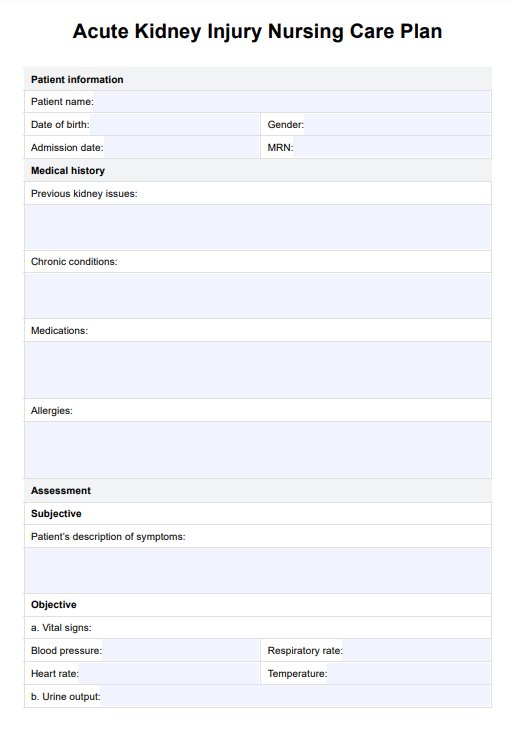To create an Acute Kidney Injury Nursing Care Plan template, start by identifying key components such as assessment criteria, nursing diagnoses, and interventions tailored to managing AKI. Include sections for vital sign monitoring, lab results, and patient education to ensure a comprehensive approach to care.

Acute Kidney Injury Nursing Care Plan
Access a comprehensive Acute Kidney Injury Nursing Care Plan template for evidence-based, individualized patient care. Download the PDF for efficient planning.
Acute Kidney Injury Nursing Care Plan Template
Commonly asked questions
Acute Kidney Injury Nursing Care Plan templates are used when a patient is diagnosed with AKI or is at risk of developing kidney complications. They provide a structured framework for monitoring, intervention, and evaluation throughout the patient's treatment journey.
These templates are utilized by healthcare professionals to systematically document patient assessments, interventions, and outcomes related to AKI. They serve as a guide for continuous monitoring and adjusting care based on the patient's evolving condition.
EHR and practice management software
Get started for free
*No credit card required
Free
$0/usd
Unlimited clients
Telehealth
1GB of storage
Client portal text
Automated billing and online payments











